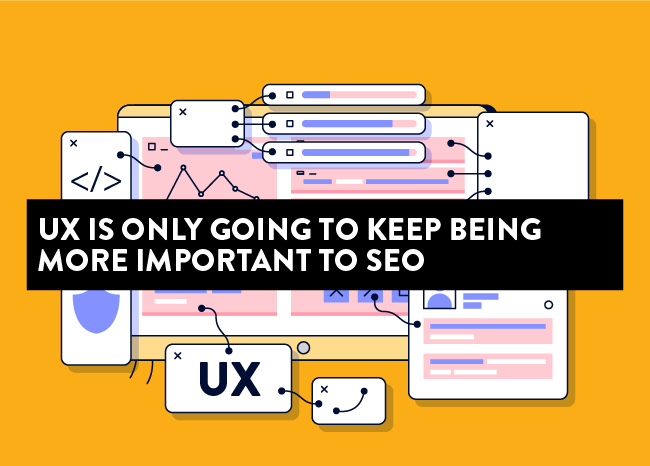 In 2019, I effectively left the SEO and content marketing industries that had been the only “real adult career” I had known. I could go into all the details of what led me to do this, but the long-story-short is that many factors led me to feel entirely burnt out with the industry and I needed a short break before finding my next step.
In 2019, I effectively left the SEO and content marketing industries that had been the only “real adult career” I had known. I could go into all the details of what led me to do this, but the long-story-short is that many factors led me to feel entirely burnt out with the industry and I needed a short break before finding my next step.
That “short break” — working in a completely different manual labor field — started at the beginning of 2020. The next thing I knew, two years went by before it was finally time for me to make my way back into the fold and start my second time around working here at Page One Power.
Starting back in this world after two years away was initially quite nerve-wracking. After all, SEO is a tumultuous industry at times and things can change on a dime. After two years of moving heavy things around for a living, would I even remember everything I need to know? Would my writing chops be rusty beyond use? Would I now be so physically strong that I break my keyboard with the sheer force of my typing?
Fortunately, things have come back fairly smoothly, and I’ve only felt slightly lost at times. The thing that has struck me the most about SEO now, as compared to when I left, is that things seem eerily similar, especially in terms of one specific point of emphasis by Google that I believe should be our primary focus and guiding light going forward.
 Taking a Trip Down SEO Trend Memory Lane
Taking a Trip Down SEO Trend Memory Lane
So, how did SEO change in my time away? What stayed the same?
SEO has always been an industry where things can change completely in an instant with one small shift or decision by Google. To figure out what changed, I decided to take a look back at the major trends going on in SEO before I left in 2019 and compare those to what we see in 2022.
For this, I did a quick search for “best SEO practices 2019” and pulled up Search Engine Watch’s “SEO 2019: Nine tips for beginners” from the all-important number one spot and featured snippet.
Search Engine Watch’s list from that year includes these nine entries:
- “Start with optimizing your site for mobile devices.”
- “Understand how users search.”
- “Write for humans, optimize for search engines.”
- “Analyze your existing search traffic.”
- “Stay up-to-date with the latest changes in SEO.”
- “Learn the most important ranking factors.”
- “Never underestimate UX.”
- “Discover the link between social media and SEO.”
- “Understand how voice search works.”
Although only one entry specifically calls out user experience (UX), if we consider the principle behind each piece of advice on this list, delivering an improved user experience is key to most of them.
Now, let’s take a look at our Linkarati list of SEO trends for 2022 by Emma DeGrandi:
- MUM (Multitask Unified Model);
- Passage ranking;
- Video content;
- Google Shopping (Shopping Graph and product reviews);
- UX (Core Web Vitals, mobile search, and voice search).
As you can see, UX is important enough that it receives its own entry. However, that is not the only time UX is represented on this list. In fact, you can see that UX is a major element of each entry:
- MUM: Delivers improved user experience by looking to reduce the number of searches needed to answer more complex Google searches.
- Passage ranking: Improves user experience by looking to deliver highly specific answers to search queries.
- Video content: Improves user experience by delivering content in a form that is being more greatly favored by users in recent years.
- Google Shopping: Delivers improved user experience by emphasizing a form of content that has received a significant increase in importance and mass use in recent years, especially since the beginning of the COVID-19 pandemic.
- UX: Specifically, Core Web Vitals and mobile search are each massive points of emphasis that show how Alphabet sees user experience as central to the product they deliver to consumers through Google Search.
 How UX Has Become Important for Content Strategy
How UX Has Become Important for Content Strategy
In case you’re concerned that this emphasis placed on UX will eventually change in some way — flashback to2011 when websites across the world were sucker-punched by the initial Panda update — fortunately, 2022 offers a much different SEO landscape than years past.
Unlike back in those days of SEO, Google’s algorithm no longer goes through a massive upheaval with a major update after periods of calm. Now, updates happen constantly and incrementally to fine-tune Google’s search results instead of making one-time, large fixes to serious issues.
That means, more or less, that Google’s points of emphasis and best practices are going to stay largely consistent year-to-year. Don’t just take my word for it here in the year 2022, though; take my word for it all the way back in an article for Business.com about Google’s then-recent Phantom Update: “As Google’s algorithm gets more sophisticated, it is no longer enough to simply create quality content, you have to take into consideration how the user experiences that content.”
Since that Phantom update six years ago, UX has been incredibly important for SEO.
 Does This Provide the User With the Best Experience Possible?
Does This Provide the User With the Best Experience Possible?
What is UX? In short, it’s about whether the user has a positive or negative experience while using your website and it applies to every piece of your site. How does this concept apply to SEO strategy, though?
Before you ever decide to hit that publish button, always ask yourself: “does any SEO tactic I am using here seem like something an algorithm update might be nicknamed after one day?” and if your answer comes anywhere near “yes,” then by no means should you click that mouse.
Think about notoriously bad examples of online content UX such as recipe blogs and how their long-winded preambles to a recipe betray the trust of their readers and take on the exact opposite approach and philosophy to your site’s UX. Will someone possibly complain about it? Then maybe don’t do it.
If it seems like an easy way to get around doing the hard work required by best practices then it’s probably too good to be true. At the very least it is not a strategy made to last and one day could cost you substantially more to go back and fix, both financially and when it comes to time and energy spent.
 UX and Linkable Content
UX and Linkable Content
As user experience solidifies its place in the pantheon of important Google ranking factors, we also need to take into account the impact that UX can have on other ranking factors, especially earning high-quality backlinks. To earn links, a website and its content have to be worthy of being linked to because they are some combination of entertaining, informative, reputable, funny, and/or they provide further or unique context; your content has to be linkable.
Look at your content from an outside perspective and imagine you landed on it by clicking a link embedded within a (hopefully) topically related piece of content on a different website. If there are UX elements that are not ideal then there is a hurdle your content will have to clear every time it could potentially earn a backlink.
If any of your competitors have similar content that answers the same question or serves the same purpose as your content, then you already have to compete with their content for time and attention. Even if your content is a stronger offering than your competitor’s, your content may be immediately judged as inferior based solely on a UX-first impression and you’ll lose that backlink opportunity to your competitor. Whether this is fair or not, it is an issue that will remain unless you treat UX as truly important.
 The Bright UX-First Future of SEO
The Bright UX-First Future of SEO
So what is there to take away from this?
My biggest takeaway is that in 2022 and going forward the key to successful SEO strategy and content creation is not just a set of tangible best practices for what kinds of backlinks to acquire or how many keywords should go into a piece of content. Instead, we now have an overarching philosophy of delivering the best experience for the user, and that means a much more interesting and dynamic SEO landscape moving forward than we have ever had previously.
At the end of the day, I walk away from this look back with the very reassuring idea that if you are doing things the right way you should never have to worry all that much. After all, for an industry that changes so often and consistently, SEO and content creation are still guided by the same principles as they have been for quite a few years now, the most central of which is to put the user first and above everything else.

